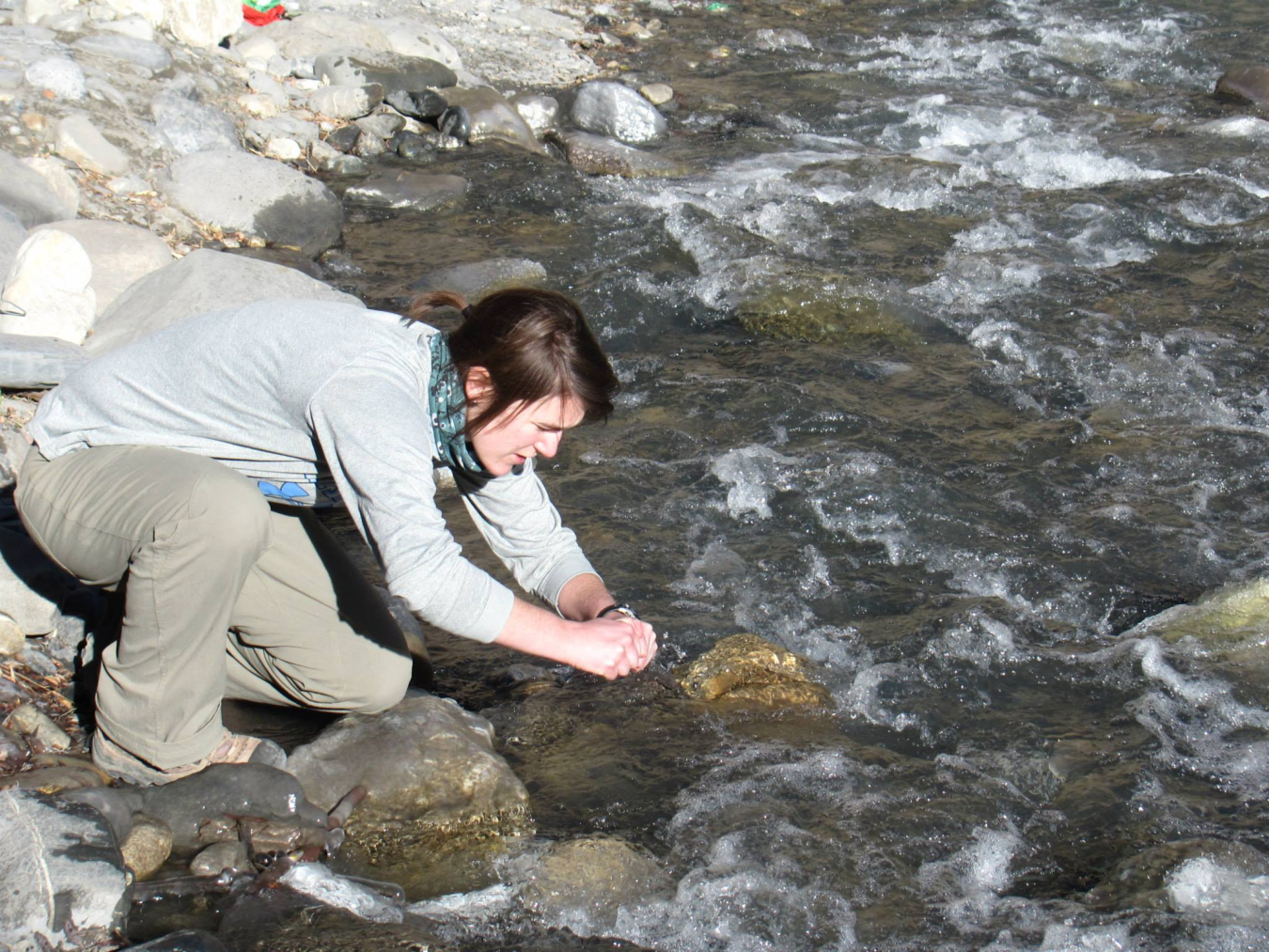Learn why Lauren Wheeler loves her job as a researcher for the Energy Exascale Earth System Model at Sandia National Laboratories.
May 9, 2019
Throughout her career, Lauren has used observations to develop and evaluate models of the solid earth, cryosphere, and atmosphere. She received her MSc from the University of Maine in Earth and Climate Sciences and Ph.D from the University of New Mexico in Earth and Planetary Sciences. In graduate school, her research was focused on climate-tectonic interactions in mountainous regions, such as southeastern Alaska and California’s Sierra Nevada, on thousand to million-year time scales.
Her research at Sandia National Laboratories focuses on improving aerosol-cloud interactions in the Energy Exascale Earth System Model (E3SM), the DOE’s earth system model, with an emphasis on dust aerosols. This research spans dust mobilization at the surface to the nucleation of ice in clouds.
What inspired you to work in STEM?
It wasn’t until my second semester of college during my first science course that I was inspired to work in STEM. I was enrolled in an introductory course in geology and found myself really interested in Earth Systems and I realized that I enjoyed the multidisciplinary nature of Earth Sciences and that there were many interesting job opportunities in the field. I especially liked the fact that there were opportunities to work outdoors. I changed majors and went on to pursue an M.Sc. and Ph.D. in Earth Sciences where I researched climate and tectonic interactions for various mountain ranges around the globe.
What excites you about your work at the Energy Department?
I work with the Department of Energy’s earth system model, E3SM, to look at aerosol-cloud interactions. I have always been drawn to numerical modelling since it provides a unique opportunity to fill the spatial and temporal gaps in our observational records. It’s also a great laboratory since it’s very difficult to setup a physical experiment for regional and global changes. Models allow us to explore a range of possibilities and test interactions between different spheres without disturbing the natural world.
How can our country engage more women, girls, and other underrepresented groups in STEM?
I think the first step to increased engagement is providing access to opportunities in STEM at any level through field trips and hands on activities. These opportunities should demonstrate how the basic principles taught in classrooms are applied outside of them.
I also think that having open, honest discussions about the hurdles that exist in STEM for women and other underrepresented groups is important. The development of strong support networks, moving more women and underrepresented groups into positions of power, and raising awareness are steps that would lead to changes in culture and policies that will increase engagement of these groups.
Do you have tips you'd recommend for someone looking to enter your field of work?
Dive into the areas that interest you! It’s much easier to be engaged when you’re invested in your research. Also, seek out a great mentor if there isn’t one already available to you. On the technical side, I would strongly recommend learning at least one programming language.
When you have free time, what are your hobbies?
Outside of work, I love spending time with my dog, going out on hikes and backpacking trips, playing soccer and ultimate, and baking.
Learn more about our programs & resources for women and girls in STEM at /women

